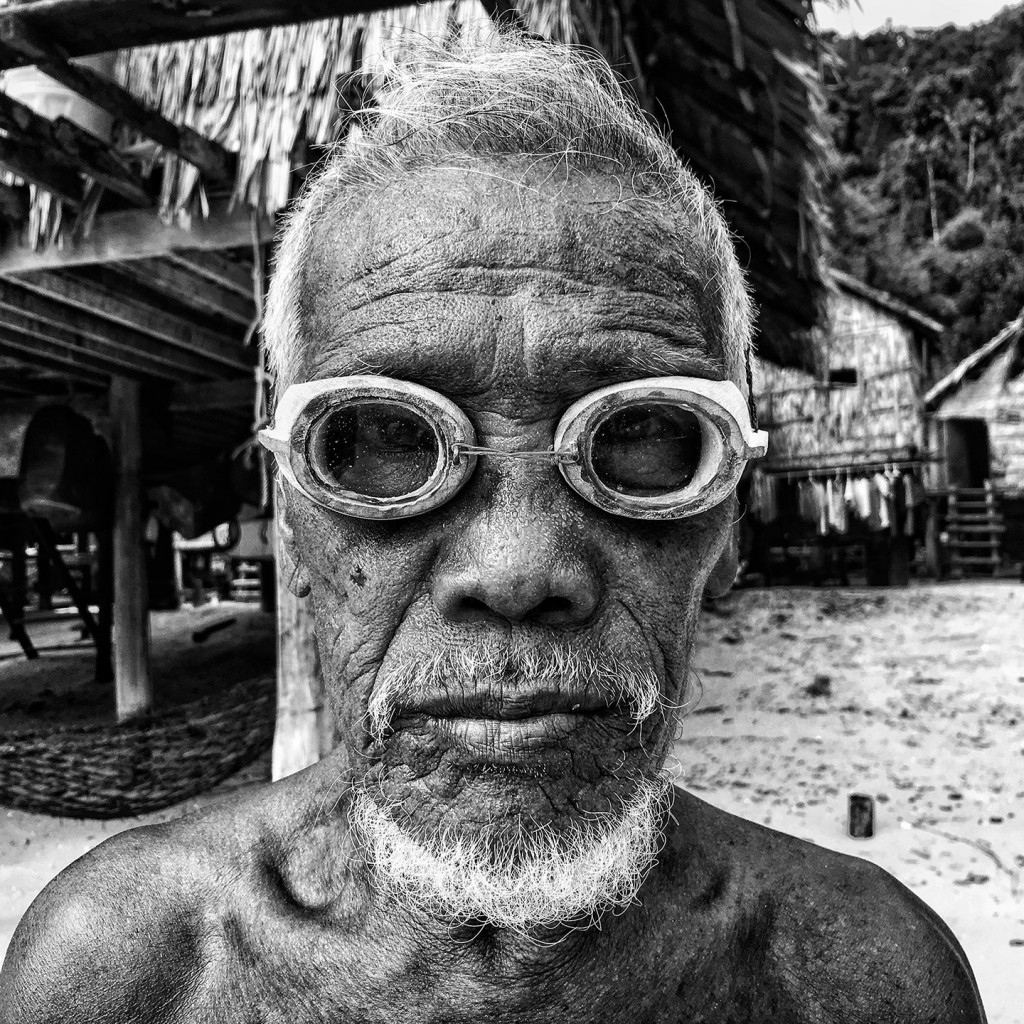As most photographers will attest, making great pictures
has little to do with owning the best and most expensive equipment.
The real secret behind great photography is in how you see a moment and
interpret it in a still frame, regardless of what type of camera you are using.
In late July, it was announced that my photograph of Moken elder, Salamah, was awarded 1st Place in 2018 iPhone Photography Awards (IPPAwards) Portrait category. Singapore’s Esquire Magazine interviewed me about my winning snapshot, my storytelling philosophy and process and what defines a picture-perfect image.
ESQUIRE: Firstly, congratulations on winning first place in the IPPA Portrait Category! Tell us briefly about the story behind your winning photo.
SCOTT A. WOODWARD: Last October, I travelled to the idyllic jungle-fringed beach of Ao Bon Yai on the tropical island of Koh Surin, a national park located 60km from the Phang Nga mainland and a few hours north of Phuket, Thailand. I was there to photograph a cover feature about the Moken — a tiny community of about 300 sea gypsies — for SilkAir’s in-flight magazine, Silkwinds.
I made my IPPAward-winning portrait of the village elder, Salamah, wearing his hand-carved wooden dive goggles on the beach early one morning. I was actually photographing portraits of a number of the Moken people for my Silkwinds story using my “real” Nikon DSLR camera, but when Salamah appeared shirtless on the beach, carrying his goggles in his hand, I asked him to put them on for a photograph. I was so moved by the moment that I decided to make an additional photograph using my iPhone. His traditional goggles — carved by his own hand using hardwood from the jungle and using pieces of glass he found on the beach — were iconic to me that I couldn’t resist making another portrait for myself on my iPhone.
ESQ: Why do you choose to submit this photo among the others you’ve shot from this series?
SAW: There are the fundamentals of lighting and composition to appraise, along with all the manifold esoteric guidelines of visual structure — and, of course, all these elements are crucial to judging a photograph. But mostly I select images based on a feeling. It’s like asking yourself how you know when you’re truly in love. You just know.
ESQ: How do you approach your subject in photography? Do you observe and explore with intent or does it lean towards spontaneity?
SAW: In the process of exploring with intent, one must be open to spontaneity. I once read that a camera is a great excuse to delve into a place deeper than we otherwise would; I like this description. Making an interesting photograph means we must observe our surroundings differently and look beyond the obvious to see something unique and special.
In fact, I call my photographic style “Choose Your Own Adventure Photography” after the books I used to read as a child. Literally and creatively, I can go one direction and discover a remarkable photographic opportunity; or I can go another direction and find something entirely different. It is this serendipity that is the beauty of photography for me.
ESQ: When did you get started into iPhone photography?
SAW: I’ve been making photographs of my adventures across Asia and around the world for nearly 25 years — initially on film and then about 15 years ago, I started shooting digitally. I purchased my first iPhone — the 3GS model — around eight years ago. And I often find it hard to imagine what I did before I owned an iPhone and began using it as a serious photography tool.
As a photographer, I am constantly observing the world around me. Amazing photographic opportunities abound all around us, and because I have a camera in my pocket at all times, I’ve been able to make tens of thousands of photographs that I never would have captured otherwise. Photographer Chase Jarvis is correct when he states, “The best camera is the one that’s with you”, and my iPhone always is.

ESQ: What is your favourite aspect of being a photographer?
SAW: One of the most exciting and rewarding aspects of my life as a photographer is being able to travel the world and meet and document so many different people while experiencing their distinct cultures and customs. There’s nothing I love more than having adventures, and my career in photography provides me with the opportunity to have these remarkable encounters around the globe that I would never have had otherwise.
ESQ: Why are colour filters necessary and how do you decide when to use a filter or not?
SAW: Colour grading a photograph — or as you say, “filtering” a picture — is an important part of any photographer’s creative post-processing workflow. These colour treatments help communicate the photographer’s vision for his picture — how he wants the viewer to feel or react when looking at his work. If a photograph is meant to convey happiness or excitement or mystery or drama or melancholy, colour grading the image is an effective way for the image-maker to help communicate that emotion. The risk of any colour treatment or filter, however, is overdoing it; in photography, like in life, moderation is everything.
ESQ: How has mobile phone photography changed the photography industry and your career?
SAW: The ubiquity of mobile phones — having a camera that is always within our reach — has made it more convenient and even simpler to make photographs and tell stories anytime, anywhere. And I think this is amazing! As most photographers will attest, making great pictures has little to do with owning the best and most expensive equipment.
Personally, I believe that the real secret behind great photography is in how you see a moment and interpret it in a still frame, regardless of what type of camera you are using. Are you able to make something ordinary appear extraordinary by showing it differently? Are you able to make the viewer feel an emotion when they see your photograph? Are you able to transport someone to a moment with you simply by pressing the shutter?
My Instagram account @scottawoodward is dedicated exclusively to photography I make with my iPhone. This provides me with a channel to not only showcase the pictures I make with my iPhone but also offers me a platform to provide glimpses of my behind-the-scenes life as a photographer, on set and on location around the world.
ESQ: What are the sources of inspiration that fuels the passion for photography?
SAW: I am inspired by the creative people I follow on Instagram, many of whom are not “professional photographers”. The quality of the work I see being produced on this platform encourages me to look at my surroundings differently, and more closely, to search harder for the beautiful in the mundane. Photography is one of the most accessible and democratic forms of artistic expression there is; and for me, Instagram so clearly embodies this philosophy.
ESQ: Any tips for portrait photography, particularly when using an iPhone camera?
SAW: My number one tip for portrait photography is to get close. Great portraits happen when you fill the screen with your subject’s face. But skip the zoom function. Mobile devices use digital zoom (not optical zoom, like a DSLR lens) that crops in on the photo, cutting away valuable pixels and degrading the quality of your image. Instead, get physically closer to your subject — and when you think you’re close, get even closer. As Robert Capa famously said, “If your pictures aren’t good enough, you aren’t close enough.”
Browse more international media coverage of this year’s iPhone Photography winners.
Follow me and my iPhone photography on Instagram @scottawoodward.


Share your thoughts